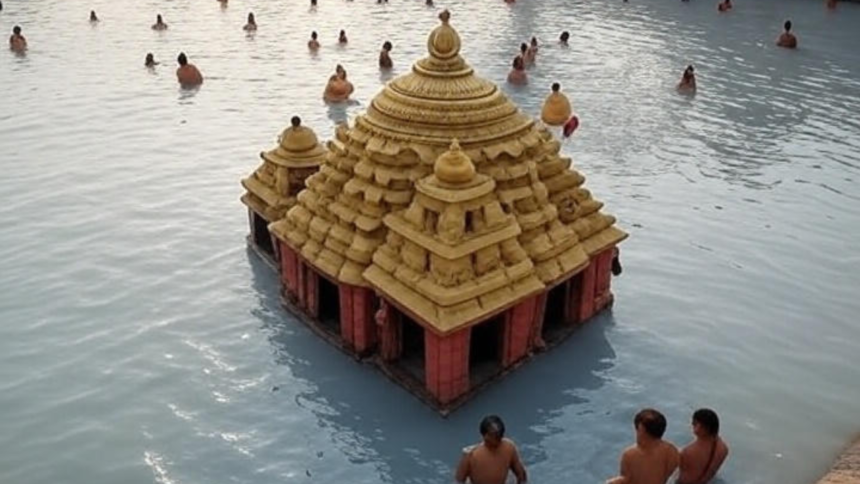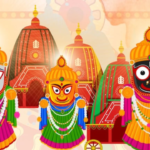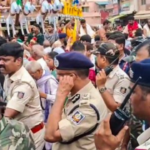Sweta Ganga, a sacred tank located to the south of the revered Jagannath Temple in Puri, Odisha, holds a significant place in the spiritual and cultural landscape of this ancient pilgrimage city. As one of the five sacred bathing spots known as the Pancha Tirtha, Sweta Ganga is integral to the pilgrimage rituals of devotees visiting Puri, a city renowned for its 12th-century Jagannath Temple, a cornerstone of Hindu devotion. The tank’s history is a rich tapestry woven with mythology, religious significance, and historical narratives, reflecting the deep spiritual heritage of Puri, also known as Purusottama Kshetra.
Mythological Origins
The origins of Sweta Ganga are deeply rooted in Hindu mythology, particularly as described in sacred texts like the Brahma Purana and Mahabharata. According to legend, Sweta Ganga was created from the nail of Lord Vishnu, emphasizing its divine origin. The Mahabharata narrates that the tank emerged as a sacred site connected to the river Ganga, believed to flow from the bottom of the earth, linking it spiritually to the holy Ganges. This connection is central to its sanctity, as pilgrims believe bathing in Sweta Ganga is equivalent to bathing in the Ganga itself, purifying them before they visit Lord Jagannath. The tank’s name, meaning “White Ganga,” is derived from a legend where its waters reportedly turn milky white briefly each year, a phenomenon attributed to the divine presence of Goddess Ganga.
Another legend from the Brahma Purana associates Sweta Ganga with King Sweta, a devout Vishnu worshipper in the Satya Yuga. King Sweta, known for his piety, sought to revive the deceased son of the sage Kapala Gautama. Through intense worship of Lord Shiva with thousands of blue lotuses, the king earned divine favor, and the child was restored to life. Pleased with Sweta’s devotion, Lord Vishnu appeared and declared that the tank near the idol of Sweta Madhava, another form of Vishnu worshipped at the site, would be named Sweta Ganga. A single droplet from this tank was said to grant heavenly salvation, and those who prayed to Sweta Madhava would attain a blissful state after death.
A poignant tale from the Brahma Purana involves Sachi Devi, a devotee from the Gaudiya Vaishnava tradition. Longing to bathe in the Ganges but unable to leave Puri due to her spiritual commitments, Sachi Devi was visited by Lord Jagannath in a dream. He instructed her to bathe in the nearby tank, revealing that Goddess Ganga had manifested there to fulfill her desire. When Sachi Devi bathed, the water turned milky, earning the tank the name Sweta Ganga. This site later became known as Ganga Mata Matha, the residence of Sarvabhauma Bhattacharya, a scholar who encountered Chaitanya Mahaprabhu here, further elevating its spiritual significance.
Historical Context
Historically, Sweta Ganga’s prominence grew alongside the Jagannath Temple, constructed in the 12th century by King Anantavarman Chodaganga Deva of the Eastern Ganga dynasty. The temple, a masterpiece of Kalinga architecture, became the epicenter of Puri’s spiritual life, and the surrounding sacred sites, including Sweta Ganga, gained importance as part of the Pancha Tirtha pilgrimage circuit. These five sites—Indradyumna Tank, Markandeya Tank, Rohini Kunda, Mahodadhi (the sea), and Sweta Ganga—are considered essential for pilgrims to bathe in to complete their spiritual journey and attain salvation.
Sweta Ganga is strategically located between the Lions Gate of the Jagannath Temple and Swargadwar, the sacred cremation ground, making it a pivotal stop for pilgrims. The tank is opposite Ganga Mata Matha and is flanked by two small temples dedicated to Sweta Madhava and Matsya Madhava, forms of Lord Vishnu. These temples are significant for sraddha ceremonies, where devotees perform rituals for their ancestors, further enhancing the tank’s ritualistic importance. The tank’s perennial water supply, believed to never dry up due to its divine connection to the Ganges, adds to its mystique.
Cultural and Religious Significance
Sweta Ganga’s role in Puri’s spiritual ecosystem is profound. Pilgrims typically bathe in the Bay of Bengal (Mahodadhi) and then in Sweta Ganga before entering the Jagannath Temple, a ritual believed to cleanse them of sins, including the grave offense of stepping over the temple’s Mahaprasad. The tank’s proximity to Swargadwar, considered a gateway to heaven, underscores its role in the cycle of life, death, and salvation in Hindu belief.
The tank’s cultural significance is also tied to the spread of Vaishnavism, particularly through the teachings of Chaitanya Mahaprabhu in the 16th century. His interactions at Ganga Mata Matha, where he explained the atmarama verse of the Srimad-Bhagavatam in eighteen ways, cemented the site’s importance in the Gaudiya Vaishnava tradition. The tank’s association with such spiritual luminaries enhances its allure for devotees and scholars alike.
Modern Relevance
Today, Sweta Ganga remains a vital part of Puri’s pilgrimage landscape, drawing thousands of devotees annually. Its location, approximately 500 meters from the Jagannath Temple, makes it easily accessible, and its serene ambiance offers a space for reflection and ritual. The tank’s enduring sanctity is a testament to Puri’s status as one of the Char Dham pilgrimage sites, embodying India’s spiritual depth and cultural continuity.
In conclusion, Sweta Ganga’s history is a blend of divine legend and historical reverence, reflecting Puri’s role as a spiritual beacon. From its mythological origins tied to Lord Vishnu and King Sweta to its integral place in the Pancha Tirtha, the tank continues to inspire awe and devotion, connecting pilgrims to the divine through its sacred waters.





